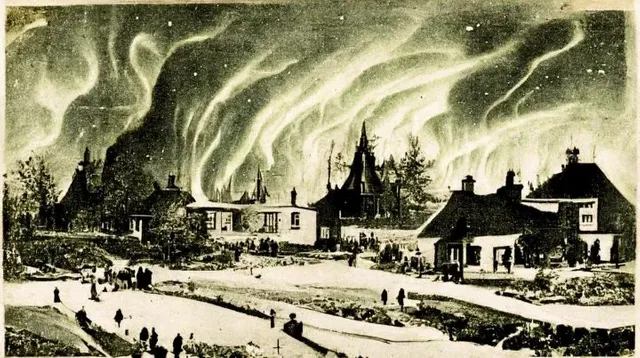Introduction: In September 1859, the Earth witnessed one of the most powerful solar storms on record, known as the Carrington Event. Named after the British astronomer Richard Carrington, who observed the solar flare responsible for the event, the Carrington Event had significant impacts on Earth's magnetosphere and technological systems of the time. This essay explores the Carrington Event, its historical context, and compares it to the potential damage it would cause in today's society, highlighting the importance of understanding and preparing for extreme space weather events.

Historical Context: The mid-19th century was a time of rapid technological advancement, with the telegraph system emerging as a critical means of communication. Telegraph lines, consisting of long wires suspended above ground, connected cities and regions, facilitating the transmission of messages over long distances. However, the reliance on these telegraph systems also made them vulnerable to disturbances from space weather events.
The Carrington Event: On September 1–2, 1859, a massive solar flare erupted from the Sun, releasing a burst of energy and triggering a coronal mass ejection (CME) directed towards Earth. When the CME reached Earth's magnetosphere, it induced intense geomagnetic disturbances, resulting in spectacular auroras visible at lower latitudes than usual. However, the most significant impacts of the Carrington Event were felt in the telegraph systems of North America and Europe.
The telegraph lines acted as giant antennas for the electromagnetic energy from the solar storm, causing widespread disruptions and failures in communication. Telegraph operators reported receiving electric shocks, telegraph lines sparked and caught fire, and messages became garbled or unreadable. Despite these challenges, telegraph operators demonstrated remarkable resilience, employing creative solutions to maintain communication during the solar storm.
Comparing to Today's Society: While the Carrington Event occurred over a century ago, its lessons remain relevant today, especially in an era of widespread reliance on technology. In today's society, the potential impacts of a similar solar storm could be far more severe and wide-ranging.
Modern society is highly interconnected through complex technological systems, including power grids, satellite networks, GPS systems, and communication infrastructure. A solar storm on the scale of the Carrington Event could disrupt or damage these critical systems, leading to widespread and prolonged outages with cascading effects on transportation, commerce, healthcare, and emergency services.
For example, disruptions to power grids could result in widespread blackouts, affecting millions of people and businesses. Damage to satellite networks could disrupt GPS navigation, telecommunications, and weather forecasting, hampering emergency response efforts and exacerbating the impact of the solar storm.
Conclusion: The Carrington Event serves as a powerful reminder of the potential impacts of extreme space weather on our increasingly technology-dependent society. While advances in science and technology have enabled us to better understand and forecast solar activity, the threat of a severe solar storm remains real.
To mitigate the risks posed by extreme space weather events, it is essential to invest in resilience measures, enhance preparedness and response capabilities, and raise awareness among policymakers, industry stakeholders, and the public. By learning from history and taking proactive steps to address the challenges posed by solar storms, we can better safeguard our technological infrastructure and ensure the resilience of modern society in the face of future space weather threats.